David Suzuki's Blog, page 38
April 28, 2016
A healthy biosphere means healthier humans
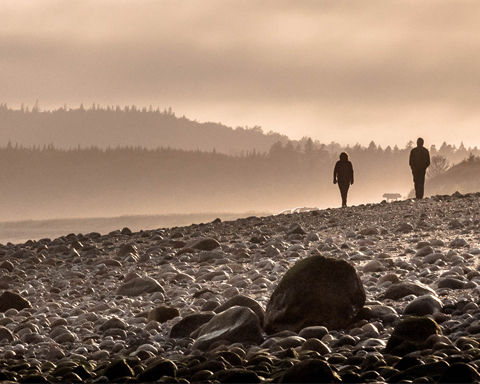
(Credit: MaxGag via Flickr).
Imagine if scientists came up with an inexpensive, easily administered way to decrease the risk of cancer, diabetes, heart disease, stroke and obesity by 25 to 35 per cent. It would create a sensation and, if patented, would be worth billions. But there’s already a free and simple way to achieve this: exercise.
The human body evolved over millions of years, long before cars, escalators, laptops and remote controls. It’s built to expend effort. Gas-powered vehicles enabled us to move over long distances or get somewhere quickly, but they’re bad medicine when they’re used to go two or three blocks. Our lives are easier but not necessarily healthier. It’s time we put more thought into keeping our bodies active and well, minimizing sickness.
Fitness increases your chances of staying well, but it’s not a guarantee. We still have much to learn about the ways in which genetics and environmental conditions affect health. After the first human genome survey was completed in 2003, we thought DNA sequences would reveal the secrets of disease and speed development of treatments. But despite trillions of dollars spent on research, many cancers are still unsolved and we’ve learned that only a few diseases — such as cystic fibrosis, Huntington’s chorea and sickle cell anemia — are the result of only one gene.
Most conditions result from the interplay of heredity and environment. And because many genes each add a small bit to defects like cancer, heart disease and dementia, magic bullet cures are elusive. Meanwhile, health care costs show little sign of stabilizing, and increasing obesity and an aging population will drive them higher.
Health is about risk management. We can’t choose our parents, so there’s little we can do about the hereditary component of disease unless you subscribe to the promise of technological engineering like gene splicing and editing. But we can influence external factors, like diet, exercise, habits and environment.
Consider air, water and food.
We need air every minute of our lives to ignite the fuel in our body to give us energy. We suck two to three litres deep into the warm, moist recesses of our lungs. Our alveoli are smeared with surfactants that reduce surface tension and enable air to stick so oxygen and whatever else is in that breath can enter our bloodstream. Carbon dioxide leaves our body when we exhale. Lungs filter whatever’s in the air. Deprived of air for three minutes, we die. Forced to live in polluted air, we sicken.
We are 60 to 70 per cent water by weight. Every cell in our body is inflated by water. Water allows metabolic reactions to occur and enables molecules to move within and between cells and, when we drink it, we also take in whatever’s in it, from molecules like DDT and PCBs to viruses, bacteria and parasites.
All the cells and structures of our body are molecules assembled from the debris of plants and animals we consume. If we spray or inject food plants and animals with toxic chemicals, and then consume them, we incorporate those chemicals into our very being, sometimes passing them on to our offspring before they’re even born.
We put effort and money into searching for disease causes. But screening toxic effects of thousands of new molecules every year is painstaking and expensive, so most are never tested. Often, mirroring genetic effects, different molecules, each harmless on its own, may collectively create a problem. Research is beginning to show that even diseases with genetic components, like Alzheimer’s and Parkinson’s, can be triggered by pesticide exposure. When we consider the vast array of chemicals spewed into air, water and soil, predicting those that may interact with each other and our genetic makeup to create health problems is difficult if not impossible.
Our health is tied to air, water and food from the soil. That means we should keep them clean, and stop dumping toxic wastes into them. Our health is also improved by exercise, which should be part of the way we live. Outdoor exercise is especially good. As the David Suzuki Foundation’s 30×30 May Nature Challenge demonstrates, connecting with nature is beneficial for physical and mental health. Caring for ourselves and the biosphere would pay many times over in improved health and happiness.
Hey! Want more DSF? Join David Suzuki on Facebook

Our work is far from over
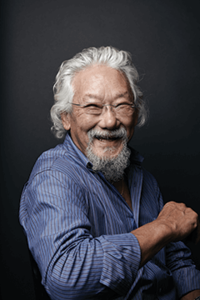
(Photo credit: Matthew Chen)
I just turned 80. I thought my work would be over and I'd be able to kick back and relax with my grandchildren by this age.
When my wife Tara and I started the David Suzuki Foundation in 1990, it was with a sense of urgency. I'd been involved in environmental issues since the 1960s, and hosted TV and radio programs about science during the 1970s, but it was working on the 1988 five-part CBC radio series It's a Matter of Survival that galvanized me.
After interviewing more than 150 scientists and experts from around the world, I saw that humans were destroying the very life-support systems of the planet at an alarming rate and scale. The program's message was that we had time to change course.
Listeners wanted to know what they could do. We received more than 16,000 letters -- in pre-email days! Up until then, my response had always been, "I'm just the messenger," but Tara said that wasn't enough, that it was time to talk about solutions. She was right.
We invited 13 "thinkers" to Pender Island in 1989. Together, we saw the need for an organization that would address systemic issues based on the best scientific information.
Over the past 26 years, the Foundation has faced struggles, challenges and changes. Although we've succeeded in many important areas -- getting much needed protection for habitat and species, providing scientific research on issues ranging from climate change to fisheries to natural capital, and raising awareness about our fundamental interconnectedness with nature -- the pace of planetary destruction has not slowed.
But as awareness about the challenges we face grows, a shift is taking place.
The Paris Agreement, signed by 195 countries at the end of 2015, showed the world is finally taking the climate crisis seriously.
Thanks to people like you who have supported the Foundation's work with your time, donations and actions, more and more people are coming together to make our world a healthier place for ourselves and our children and grandchildren.
As a father and grandfather, I know I share with you the sense that this work is worthwhile and that together we can bring about positive change.
I'm grateful to you for standing with us and supporting us, and for continuing to work for a better world. I hope you will continue to support the Foundation in its important work.
Hey! Want more DSF? Join David Suzuki on Facebook

How to make toothpaste

(Credit: Lindsay Coulter)
What does acting like we are nature and acknowledging that our choices affect the planet look like?
It looks like making toothpaste!
The benefits:
Avoid plastic microbeads which may contain phthalates and bisphenol-A, are being eaten by fish and birds.
Avoid triclosan, which contributes to antibiotic-resistant bacteria and harms wildlife.
Avoid sodium laureth sulphate, which can be contaminated with possible carcinogen 1,4-dioxane.
QUEEN OF GREEN TOOTHPASTE RECIPE
Ingredients
45 ml (3 Tbsp) coconut oil
45 ml (3 Tbsp) baking soda
5 drops essential oil (optional); e.g., peppermint
2.5 ml (½ tsp) xylitol or bentonite clay (optional)
Directions
Add all ingredients to an air-tight container and mix to form a paste. Personalize this recipe by altering ingredient ratios and optional additions for desired flavour and results.
(And because coconut oil buildup might clog drains, spit into the compost instead of the sink after you brush!)
Note: Xylitol (not safe for pets!) is a sweetener that inhibits the growth of cavity-causing bacteria. Bentonite clay is alkaline and can support remineralization.
WHAT SHOULD YOU DO WITH A MICROBEAD PRODUCT?
To see if a product contains microbeads, check the ingredient list for polyethylene or polypropylene, polyethylene terephthalate, polymethyl methacrylate or nylon. For disposal:
Return it to the store.
Mail it back to the manufacturer.
Filter the microbeads out and throw them in the garbage. Use the rest of the product if it is Dirty-Dozen-free.
Hey! Want more DSF? Join David Suzuki on Facebook

You're making waves in ocean conservation
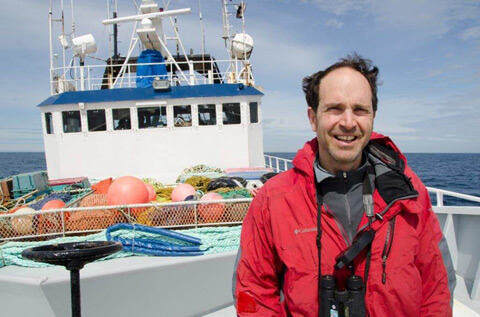
DSF’s Scott Wallace is helping change local marine conservation and drawing attention from around the world.
Thanks to your support, DSF senior research scientist Scott Wallace led an unprecedented collaboration between industry, government and environmental groups that's protecting sensitive seaf loor habitat while keeping commercial fishing afloat.
Now one of Canada's most criticized fisheries is transforming into one of its most highly regulated success stories -- and inspiring worldwide attention.
In February, the Vancouver Aquarium recognized Wallace's work to help reform the B.C. trawl fishing industry with its Murray A. Newman Award for Significant Achievement in Aquatic Conservation.
When DSF published Wallace's Dragging our Assets: Toward an Ecosystem Approach to Bottom Trawling in Canada in 2007, the relationship between the Foundation and B.C.'s bottom trawl fleet was chilly.
By 2012, the former adversaries had come up with a solution to conserve habitat, which has now had four years of proven success.
A GLOBAL FIRST
The B.C. trawl agreement is the first in the world to set up a quota system to limit habitat damage, especially to highly sensitive coral and sponges.
Experts in Europe, Asia and North America have hailed its innovative approach, it's been presented to the U.S. National Oceanic and Atmospheric Administration and recognized by the scientific journal Marine Policy as the first of its kind.
Expect more of this model in future fisheries work, Wallace said. "There is increasing recognition on all sides that collaborative solutions, when possible, are better and tend to be more permanent."
Hey! Want more DSF? Join David Suzuki on Facebook

More than 125 communities now have environmental rights declarations
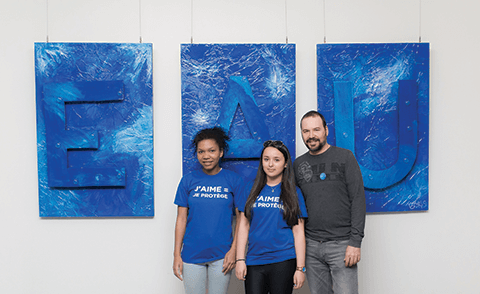
Blue Dot volunteers gather in Montreal, Quebec, to create art installations for World Water Day.
Thanks to volunteers and donors like you, more than 125 municipalities -- representing a third of the country! -- have passed environmental rights declarations.
When David Suzuki launched the Blue Dot movement with his cross-country tour, we aimed to pass five declarations in the first year. We never imagined this movement would grow so quickly, right across the country.
LEAPING TO NATIONAL ATTENTION
Now it's time to move on to the next phase.
We'll continue to work with communities to pass declarations or strengthen existing declarations and begin laying the groundwork for the Canadian government to pass a federal environmental bill of rights.
In February, Blue Dot representatives were at the Federation of Canadian Municipalities Sustainable Communities Conference, attended by more than 400 municipal leaders, to promote the City of Victoria's resolution calling on the federal government to pass an environmental bill of rights.
DSF staff and volunteers also hosted a celebratory "side" event for representatives from our Blue Dot municipalities, inviting them to join the next phase of the campaign.
World Water Day (March 22) was our official federal launch. We asked supporters across the country to call on the federal government to respect, protect and fulfil our right to a healthy environment, including the right to clean water.
People across Canada gathered to screen documentaries, write letters to the editor, build art installations and host panel discussions that explored the right to clean water in Canada.
Now we're setting our sights on the June Federation of Canadian Municipalities Annual Conference in Winnipeg, organizing our supporters to call for a federal environmental bill of rights there.
POWERED BY PEOPLE LIKE YOU
Canadians care about environmental rights. The participation of people across Canada -- volunteers, donors, artists, musicians, politicians and more -- continues to exceed our wildest expectations.
It won't be easy, but we're on our way to having the right to a healthy environment included in the Canadian Charter of Rights and Freedoms.
More than half the world's nations offer constitutional guarantees for the right to live in a healthy environment. But not Canada.
Canada's Charter is silent on the environment. Recognizing every Canadian's legal right to clean air and water, safe food, a stable climate and diverse, abundant ecosystems will lead to stronger environmental laws, better enforcement of existing laws, improved environmental performance and healthier communities for generations to come.
Hey! Want more DSF? Join David Suzuki on Facebook

You give us all butterflies
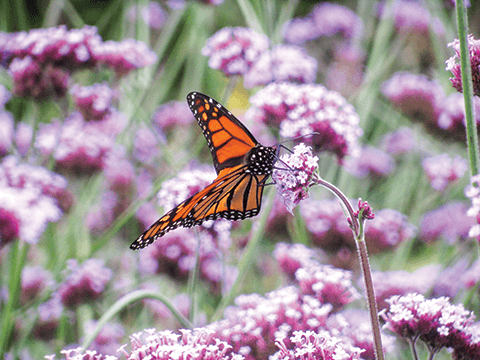
Thanks to donors like you, Canadians participating in our #GotMilkweed campaign over the past two years planted more than 15,000 milkweed and other pollinator-friendly flowers in backyards, parks and schoolyards throughout the summer breeding grounds of the monarch butterfly.
And it's working!
In February, we learned monarch populations have bounced back from two years of historic lows. This is great news! And every person who's taken part should be proud.
Still, monarch populations are 80 per cent lower than they were 20 years ago and must be larger to be resilient to ever-increasing threats, such as climate change and habitat loss. Planting milkweed is the most important thing we can do to help them.
(In case you didn't already know, monarch butterflies only lay their eggs on milkweed and the plants are their caterpillars' first food.)
BUTTERFLY WAY WITH US!
Your support already helped establish dozens of pollinator-friendly patches through the Homegrown National Park Project in the Greater Toronto Area. So we're expanding!
This spring, we're launching the Great Canadian Butterflyway project, to inspire people like you to create pollinator habitat across Canada. Canadian cities big and small can make space for native wild bees and local butterflies in parks, gardens, streets, laneways and rooftops. We'll provide tips, resources and inspiration.
And we're partnering with Tyler Flockhart, one of North America's leading monarch researchers, to determine how best to restore and enhance thousands of kilometres of linear infrastructure corridors -- rail, road and hydro rights-of-way -- to welcome even more butterflies and bees.
Hey! Want more DSF? Join David Suzuki on Facebook

You're holding the prime minister to his Paris climate commitments!

When thousands of world leaders and climate experts gathered in Paris for the December UN climate convention, we all hoped that Canada's new government would live up to its promise that "Canada is back." We wanted Canada to make clear commitments to reduce greenhouse gas emissions.
Signing the agreement meant that Canada must immediately develop a new climate action plan with new emissions targets. Your support helped us gather nearly 10,000 messages calling on the prime minister to live up to his Paris commitments and quickly and decisively shift the country away from fossil fuels.
Hey! Want more DSF? Join David Suzuki on Facebook

Paris Agreement marks shift in world thinking
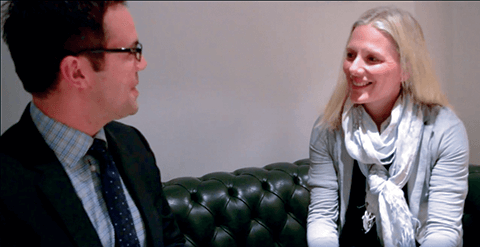
Your support meant Canadians had front-row seats at COP21, including interviews with decision-makers such as Catherine McKenna, federal minister of environment and climate change.
Last year's UN climate conference was a turning point for the planet.
And, thanks to you, the Foundation's science and policy director, Ian Bruce, and communications and research specialist, Steve Kux, were on the ground in Paris, meeting with policy-makers, answering media inquiries and keeping you up to date on events as they happened.
"The Paris Agreement may not be perfect, but it's a monumental step in the right direction," Bruce said. "Given the political realities at play when 195 countries come to the negotiating table, it's arguably the best possible agreement and marks a shift in how 21st century diplomacy will occur. It also contains a mechanism to ensure collaboration and strengthening of commitments over time."
REACHING MILLIONS
Bruce and Kux's regular video blogs and other communications reached hundreds of thousands of people. Our Facebook post announcing the final Paris Agreement reached three million people -- the largest audience for any single piece of COP21 content from any Canadian organization!
Their efforts kept you informed. They also helped build critical relationships with key delegates that continue to bear fruit: Canadian government officials they met and interviewed are now calling on DSF for recommendations and guidance on enacting effective climate policy.
Hey! Want more DSF? Join David Suzuki on Facebook

You brought Canada's human rights performance to the world's attention
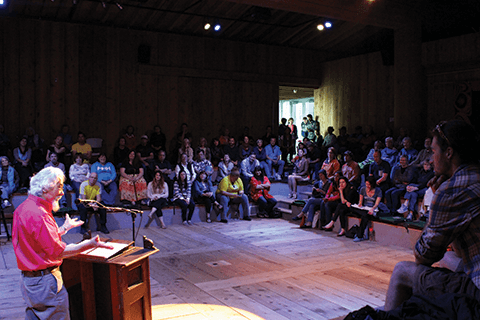
British Columbians shared their ideas, hopes, fears, and questions during the Celebrating Coastal Connections tour. (Photo credit: Panos Grames)
Thanks to you, coastal British Columbians' voices were heard in Geneva in February, as the United Nations Committee on Economic, Social and Cultural Rights reviewed Canada's human rights record.
And the committee listened! "The committee agreed with us that stronger environmental protections are essential to safeguard our human rights," said Jay Ritchlin, Foundation director for Western Canada.
The Foundation's submission linked Canada's failure to meet international human rights obligations to reduced environmental regulations and oversight. It was based on more than 1,500 written, oral and video stories collected from 12 coastal B.C. communities, including 12 First Nations, during our June 2015 Celebrating Coastal Connections tour.
The committee pointed to Canada's weakened environmental regulations, asked why it's not doing more on oceans protection and climate change, and advised our country to improve environmental protections and transition our economy away from damaging fossil fuel production toward cleaner and safer sources of energy.
They also agreed with coastal residents' observations that climate change and ecosystem degradation affect their culture, food and water, and called for meaningful participation of Indigenous peoples in decision-making related to development projects on or near their lands.
Hey! Want more DSF? Join David Suzuki on Facebook

April 27, 2016
Finding Solutions - Spring 2016
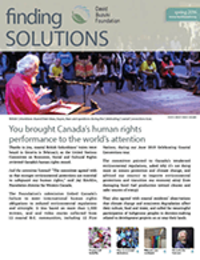
Finding Solutions is our quarterly report to you -- showing your donations at work in our recent victories and campaigns. Plus, it's full of tips, news, recommended books and movies, and ways you can help the environment in your everyday life.
Hey! Want more DSF? Join David Suzuki on Facebook

David Suzuki's Blog
- David Suzuki's profile
- 247 followers



